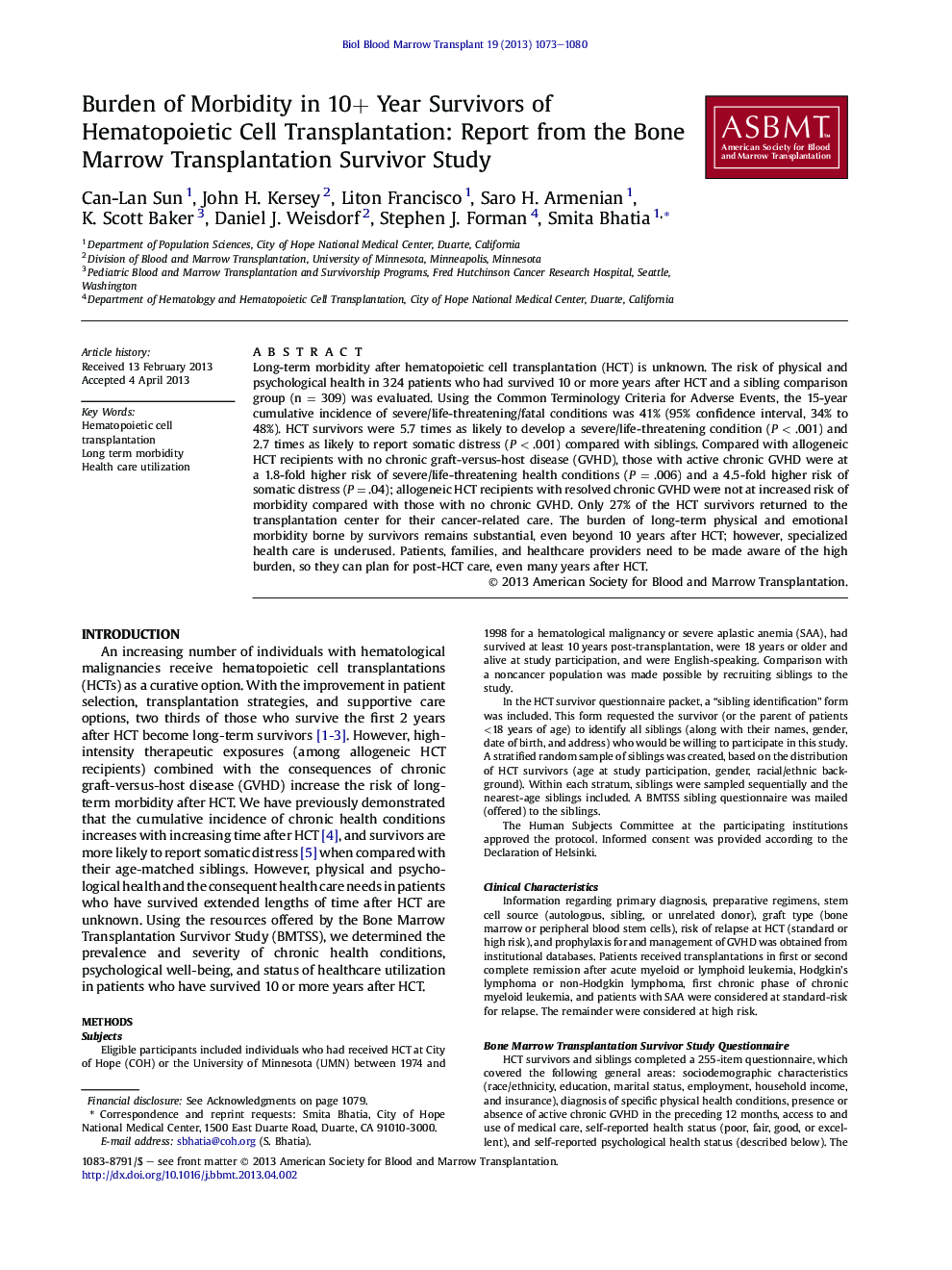| Article ID | Journal | Published Year | Pages | File Type |
|---|---|---|---|---|
| 2105248 | Biology of Blood and Marrow Transplantation | 2013 | 8 Pages |
Long-term morbidity after hematopoietic cell transplantation (HCT) is unknown. The risk of physical and psychological health in 324 patients who had survived 10 or more years after HCT and a sibling comparison group (n = 309) was evaluated. Using the Common Terminology Criteria for Adverse Events, the 15-year cumulative incidence of severe/life-threatening/fatal conditions was 41% (95% confidence interval, 34% to 48%). HCT survivors were 5.7 times as likely to develop a severe/life-threatening condition (P < .001) and 2.7 times as likely to report somatic distress (P < .001) compared with siblings. Compared with allogeneic HCT recipients with no chronic graft-versus-host disease (GVHD), those with active chronic GVHD were at a 1.8-fold higher risk of severe/life-threatening health conditions (P = .006) and a 4.5-fold higher risk of somatic distress (P = .04); allogeneic HCT recipients with resolved chronic GVHD were not at increased risk of morbidity compared with those with no chronic GVHD. Only 27% of the HCT survivors returned to the transplantation center for their cancer-related care. The burden of long-term physical and emotional morbidity borne by survivors remains substantial, even beyond 10 years after HCT; however, specialized health care is underused. Patients, families, and healthcare providers need to be made aware of the high burden, so they can plan for post-HCT care, even many years after HCT.
